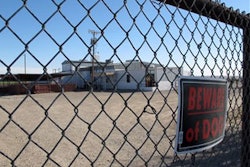Food processing and packaging equipment is complex and multi-faceted, often with difficult-to-reach areas that can house biofilms and food soils that may result in microbiological hazards. Hidden surfaces lead to inadequate sanitation if not properly addressed, but those are not the only danger zones. Pitted, scratched or otherwise damaged surfaces on food processing and packaging machines may also cause bacteria to remain even after standard cleaning and sanitation procedures have taken place. Eventually, the bacteria may form a biofilm, which can harden over time and make removal even more difficult. The Institute of Food and Agricultural Sciences warns that, “Since the effectiveness of sanitization requires direct contact with the microorganisms, the surface should be free of cracks, pits, or crevices which can harbor microorganisms.”
In addition, damaged surfaces may also retain allergen-containing food particles, which may enter food products not labeled with an allergen warning. This is especially a concern for powdered food processing plants, where powdered particles are more likely to cling to equipment due to static electricity.
Refurbishing Machines
One way to increase food safety is to refurbish food processing and packaging machines so that all surfaces remain in good repair. While refurbishing food manufacturing machines is a major undertaking, it is key in raising the bar on food safety and quality.























